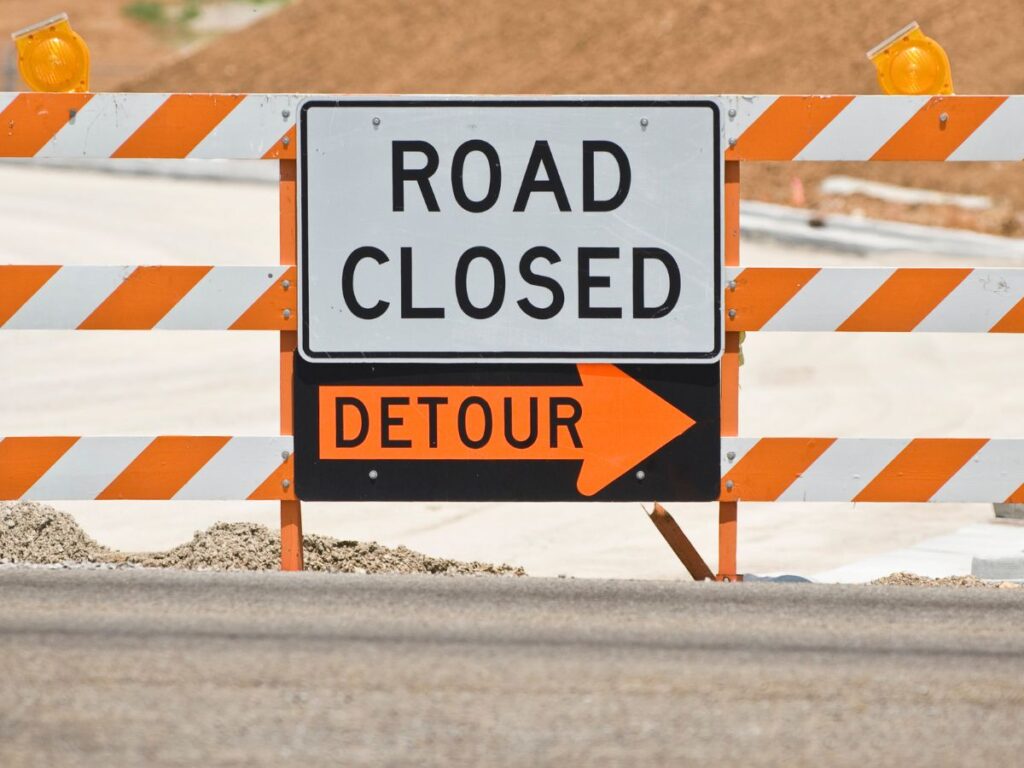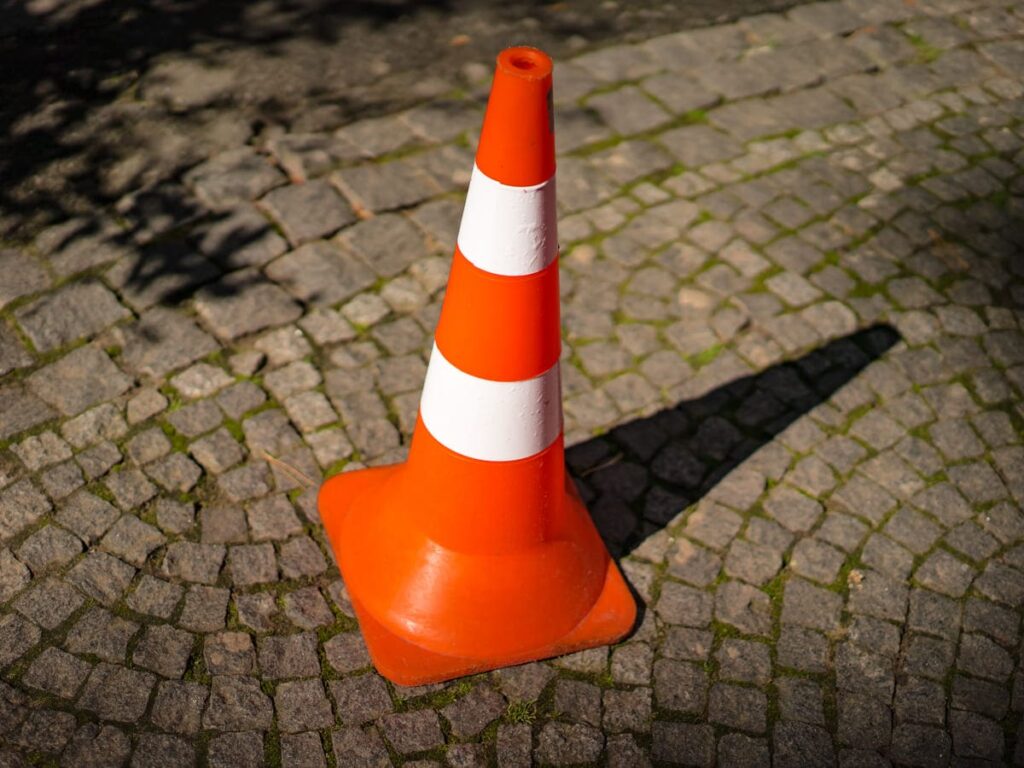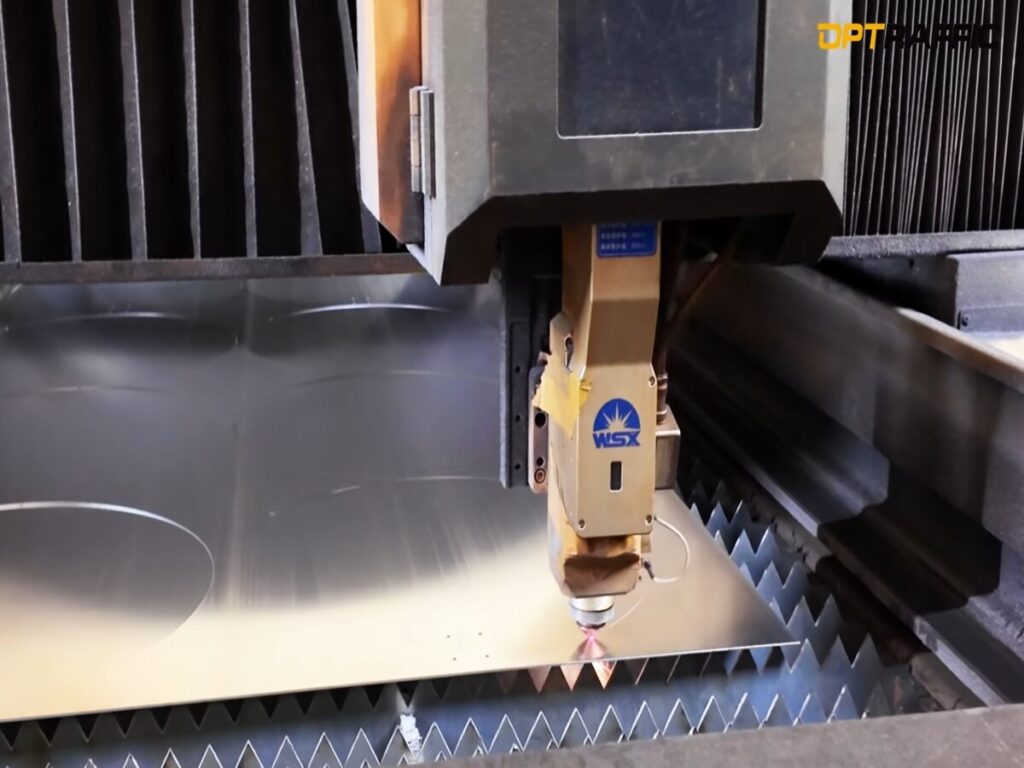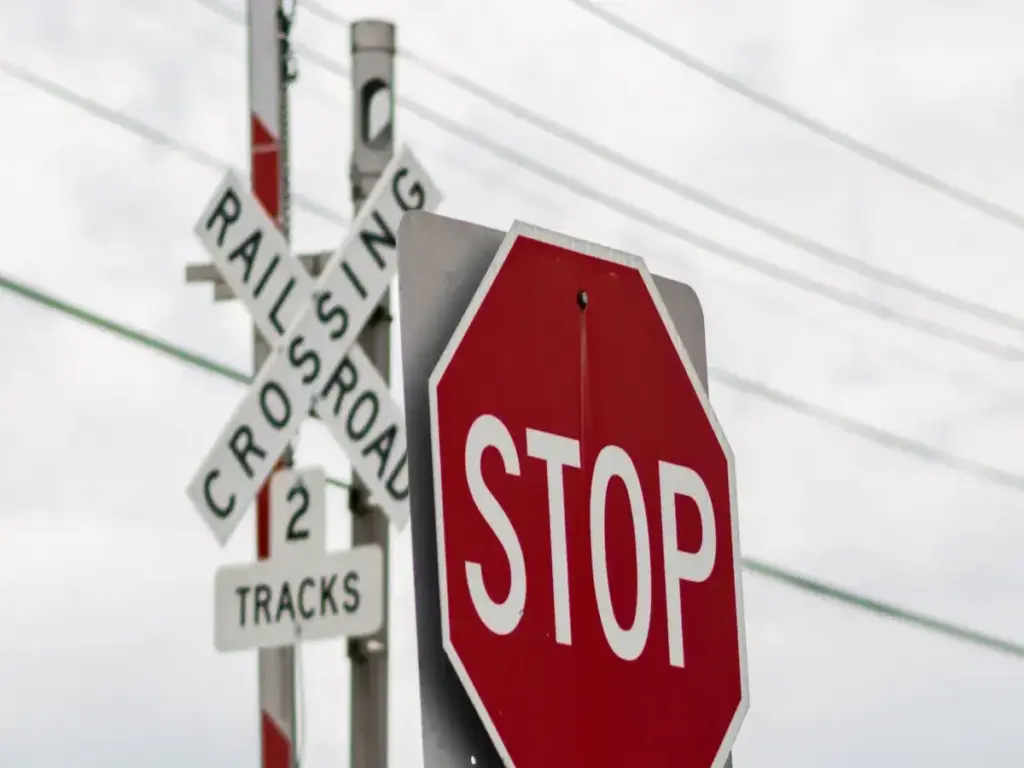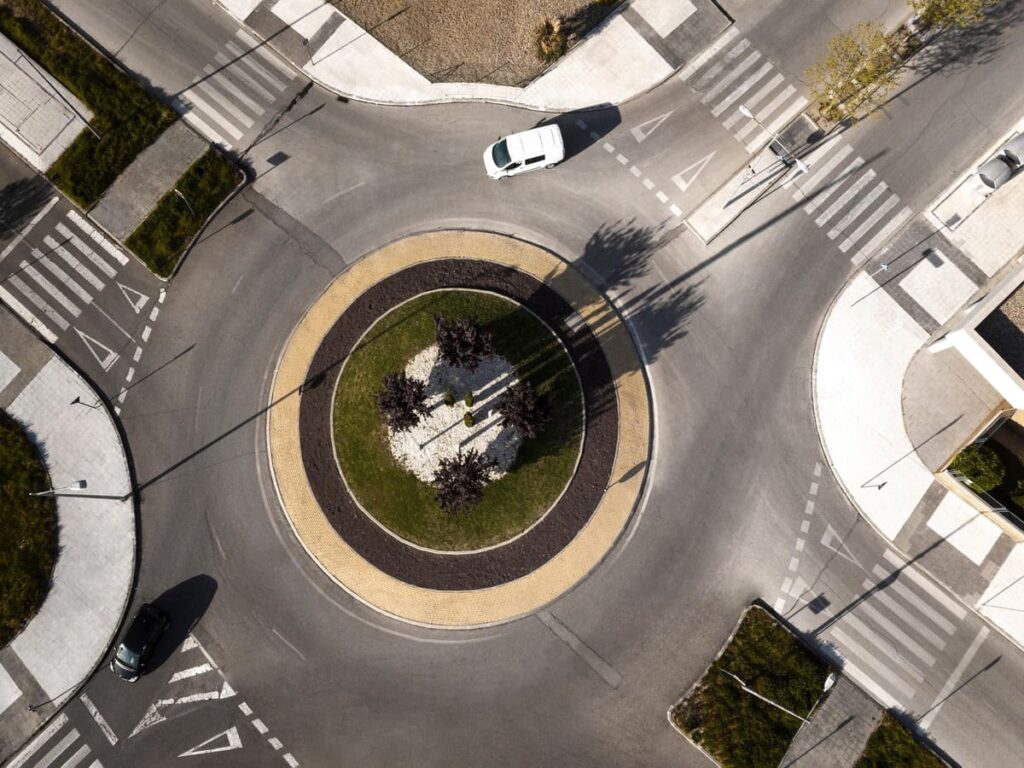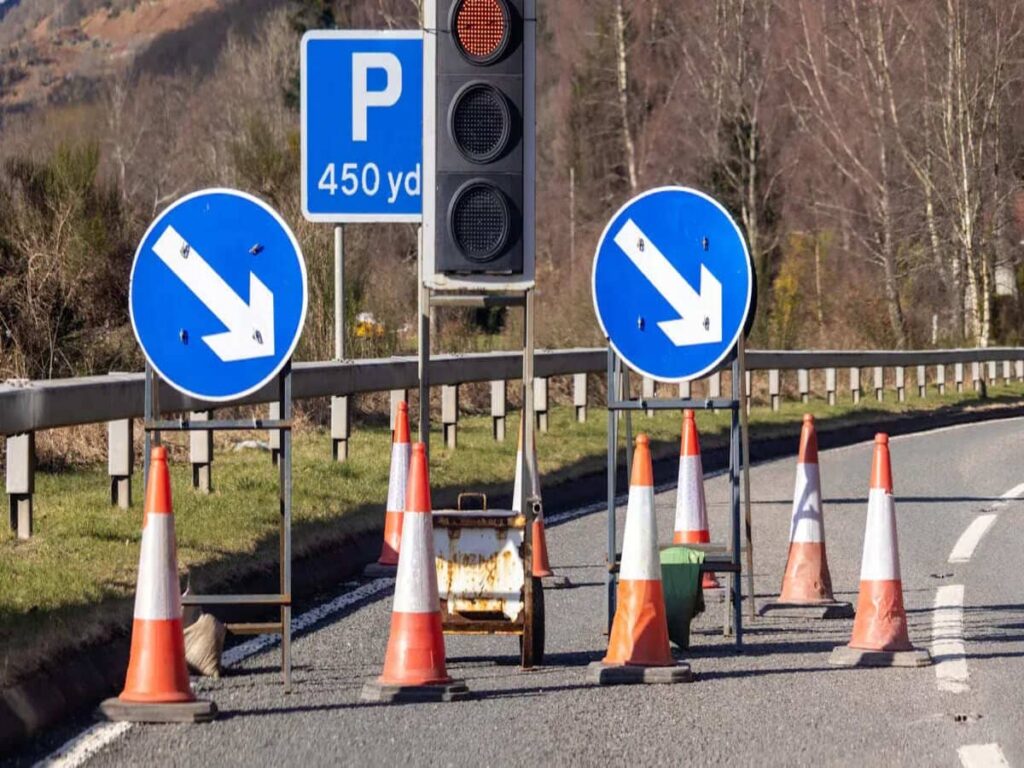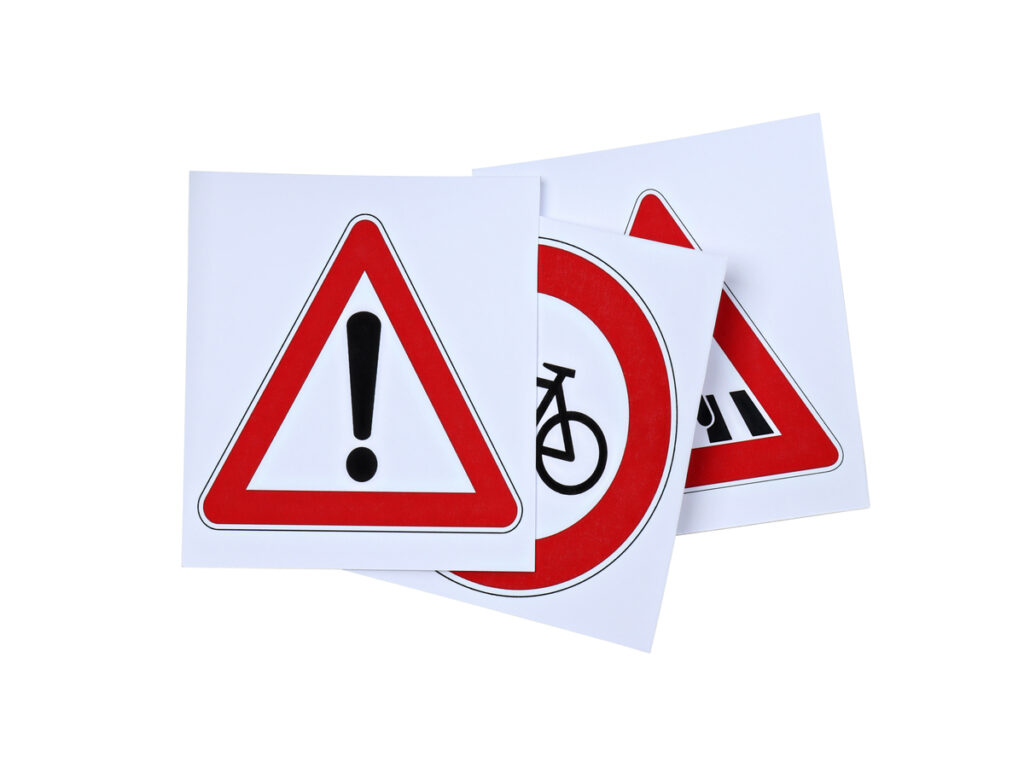
Quizás se pregunte qué tamaño de señales de advertencia del Reino Unido necesita, Especialmente para letreros en forma de triángulo y temporales utilizados durante las obras viales o los peligros a corto plazo. Elegir el tamaño correcto no se trata solo de visibilidad, es un requisito legal. El tamaño de una señal de advertencia en el Reino Unido depende del límite de velocidad de la carretera, el tipo de entorno vial (urbano, rural, autopista), y cuánto tiempo estará en su lugar el letrero. Las señales que son demasiado pequeñas pueden pasar desapercibidas para los conductores, Crear graves riesgos de seguridad.
En OPTRAFICO, ayudamos a los compradores, contratistas, y los consejos eligen el correcto signo de tráfico Tamaños basados en las regulaciones del Reino Unido.. Ya sea que esté buscando señales para instalaciones viales a largo plazo o proyectos temporales, Nuestro equipo garantiza que sus señales de advertencia cumplan con los estándares de visibilidad y cumplimiento..
Señales de advertencia del Reino Unido: Formas y estándares
Diseño de triángulo
La mayoría de las señales de advertencia del Reino Unido son triángulos.. La ley dice que estos triángulos deben tener tres lados que tengan la misma longitud.. Esto los hace equiláteros. La forma de triángulo ayuda a las personas a detectar rápidamente las señales de advertencia, Incluso desde muy lejos. Los triángulos se ven diferentes de otras formas de signos.. Es importante utilizar el tamaño y la forma del triángulo rectángulo para cada señal de advertencia.. El Departamento de transporte (Dft) da las plantillas oficiales de triángulos. Puedes encontrar las reglas en Tsrgd Cronograma 13 y el Capítulos del Manual de Señales de Tránsito 4 y 8. Estas reglas garantizan que todas las señales de advertencia del Reino Unido tengan el mismo aspecto y sean fáciles de leer..
Color y bordes
Las señales de advertencia del Reino Unido utilizan una combinación de colores simple. Cada cartel muestra un símbolo negro sobre un fondo blanco.. Hay un borde rojo alrededor del cartel.. El borde rojo utiliza un color especial llamado Signal Red.. Esto coincide con el estándar británico 381C No. 537. El rojo brillante ayuda a que el letrero se destaque en cualquier clima.. Las señales reflectantes deben seguir estrictas reglas de color., como los de BS 873: Parte 6 o BS EN 12899-1. El manual no dice qué ancho debe tener el borde.. Pero sí dice que los colores y los bordes deben ser claros.. Esto hace que las señales de advertencia sean fáciles de ver y ayuda a mantener las carreteras seguras..
Consejo: Asegúrese siempre de que los colores y los bordes de sus señales de advertencia coincidan con las reglas oficiales.. Esto mantiene sus letreros legales y fáciles de notar..
Materiales
Existen diferentes materiales para las señales de advertencia del Reino Unido.. Cada material tiene sus propios puntos positivos en cuanto a resistencia y uso.. La siguiente tabla enumera las principales opciones.:
| Tipo de material | Durabilidad / Características | Notas adicionales |
|---|---|---|
| Aluminio resistente (63 mil) | Dura más 10 Años al aire libre, tiene una capa protectora | Aluminio grueso, bueno para lugares difíciles |
| Vinilo laminado | Tiene una capa protectora | Resiste el clima, calidad profesional |
| Plástico HDPE | Grueso y fuerte | Bueno para adentro o afuera |
| Plantillas de polietileno reutilizables. | 63 mil de espesor, acérrimo | Se utiliza donde hay mucho tráfico. |
| Etiquetas magnéticas laminadas pesadas | Fuerte y de alta calidad | Bueno para señales que mueves o reutilizas. |
Elija el material según dónde colocará el letrero y cuánto tiempo desea que dure. Todos estos materiales ayudan a que las señales de advertencia del Reino Unido se mantengan fuertes y fáciles de ver en muchos lugares..
Señales de advertencia: Reglas de tamaño
Tamaños estándar
Descubrirá que las señales de advertencia del Reino Unido vienen en una variedad de tamaños estándar.. Estos tamaños de señales ayudan a los conductores a detectar las señales temprano y reaccionar a tiempo.. Los tamaños de triángulos más comunes son 600 milímetros, 750 milímetros, 900 milímetros, y 1200 milímetros. Cada tamaño se adapta a un tipo diferente de carretera y velocidad.. La siguiente tabla muestra las aplicaciones típicas para cada tamaño.:
| Tamaño del triángulo | Uso típico | Tipo de carretera / Velocidad |
|---|---|---|
| 600 milímetros | Calles urbanas, zonas escolares | Arriba a 30 mph |
| 750 milímetros | Carreteras rurales, Carreteras B | 40–50 mph |
| 900 milímetros | Rural de alta velocidad, Carreteras A | 60 mph+ |
| 1200 milímetros | Autopista, calzadas duales | 70 mph o casos especiales |
Siempre debes hacer coincidir el tamaño de la señal con el tipo de carretera y la velocidad.. Las señales más grandes dan a los conductores más tiempo para ver y comprender la advertencia.. Para marcas viales, como líneas de advertencia, Verás dos anchos principales.: 100 mm y 150 milímetros. Cuanto más ancho 150 La línea mm se utiliza en autopistas y lugares donde se necesita mayor visibilidad., como curvas o puntos peligrosos.
Dimensionamiento por velocidad de carretera
La velocidad de la carretera decide el tamaño mínimo de las señales de advertencia triangulares.. En carreteras con un límite de velocidad de hasta 30 mph, debes utilizar al menos un 600 triángulo mm. Para carreteras con límites de 40 a 50 mph, el tamaño mínimo aumenta a 750 milímetros. Cuando conduce por carreteras con velocidades de 60 mph o más, el triángulo debe ser al menos 900 milímetros. En autopistas, necesitas un 1200 Triángulo de mm para máxima visibilidad.. Esta regla ayuda a mantener todas las señales de advertencia claras y fáciles de leer., incluso cuando los vehículos se mueven rápido.
También notarás que aparecen marcas de advertencia más grandes al inicio de las zonas de mayor velocidad.. Por ejemplo, al acercarse a una zona de límite de velocidad por encima 40 mph, La marca del triángulo en la carretera se hace más grande.. Este patrón muestra que a medida que aumenta la velocidad, el tamaño de la advertencia también debe aumentar. Siempre debe consultar el Manual de señales de tráfico para conocer las reglas de tamaño más recientes..
Nota: Utilice siempre la velocidad de diseño de la carretera., no solo el límite de velocidad publicado, al elegir el tamaño correcto del cartel.
Requisitos de proporción
Debe mantener correctas la forma del triángulo y las proporciones de los símbolos cuando elija o diseñe señales de advertencia en el Reino Unido.. El triángulo debe permanecer equilátero., con todos los lados de la misma longitud. No estires ni aplastes el triángulo., ya que esto hace que la advertencia sea menos clara. El espacio entre el símbolo y el borde rojo también debe permanecer igual como se muestra en las plantillas oficiales.. Si cambias estas proporciones, Es posible que los conductores no reconozcan la señal o pasen por alto la advertencia..
Cuando utiliza líneas o marcas de advertencia, También debes seguir el ancho y largo correctos.. Por ejemplo, 150 Las líneas de mm de ancho son mejores para carreteras con mucho tráfico o de alta velocidad., mientras 100 Las líneas mm funcionan para lugares más lentos o menos concurridos.. Mantener las proporciones adecuadas tanto para las señales como para las marcas ayuda a que todos comprendan la advertencia rápidamente y mantiene las carreteras seguras..
Señales de advertencia temporales en el Reino Unido
Tamaños de señales temporales
Verá que las señales de advertencia temporales vienen en algunos tamaños estándar.. Los tamaños más comunes son 750 milímetros, 900 milímetros, y 1200 milímetros. Debes elegir el tamaño según la velocidad de la carretera y la distancia a la que los conductores deben ver la señal..
- Usar 750 Señales de mm para calles y carreteras de la ciudad con velocidades de hasta 40 mph.
- Elegir 900 Señales de mm para carreteras con velocidades entre 50 mph y 60 mph.
- Elegir 1200 Señales en mm para autovías de alta velocidad., Carreteras A, y autopistas.
Las señales más grandes ayudan a los conductores a detectar las advertencias a tiempo, especialmente cuando hay curvas, sierras, u otras obstrucciones. Si trabaja de noche o con mal tiempo, deberías usar el tamaño más grande posible. Esto mantiene a todos seguros y garantiza que la advertencia sea clara..
Consejo: Siempre haga coincidir el tamaño de la señal con la velocidad de la carretera y la distancia que los conductores necesitan para reaccionar..
Materiales y montaje
Debe utilizar materiales resistentes y visibles para las señales de advertencia temporales.. La mayoría de las señales temporales utilizan paneles reflectantes o materiales flexibles que resisten el viento y la lluvia.. La superficie reflectante ayuda a los conductores a ver la señal de noche o con mal tiempo.. Estándar Británico 8442:2015 establece las reglas para estos materiales. Encontrarás diferentes grados de reflectividad., como R1 y R2 para caminos urbanos y rurales, y R3b para caminos rápidos.
Para montaje, tienes varias opciones:
- Utilice soportes de acero galvanizado o aluminio para fijar carteles a los marcos.. Estos metales no se oxidan y duran mucho tiempo..
- Coloque carteles en marcos con sacos de arena., conos, o trípodes plegables. Esto facilita mover los letreros cuando sea necesario..
- En caminos rápidos, puede utilizar señales montadas en vehículos o remolques. Estos van al borde o parados si el arcén no está disponible..
- Agregue luces portátiles o Balizas LED para hacer las señales aún más visibles por la noche.
Debes revisar todos los soportes y soportes al menos cada seis meses.. Esto le ayuda a encontrar cualquier daño a tiempo y mantiene las señales seguras y claras.. Limpie las señales con frecuencia para que la suciedad no bloquee la advertencia..
Nota: Asegúrese siempre de que sus señales de tráfico temporales sigan las Normas de señales de tráfico y las instrucciones generales. (Tsrgd) para el tamaño, forma, y colocación.
Diferencias de color
Las señales de advertencia temporales se ven diferentes de las señales permanentes. Notarás que las señales temporales suelen tener un fondo amarillo con un borde negro y símbolos negros.. Esta combinación de colores se diferencia de los habituales carteles permanentes., que utilizan un fondo blanco y un borde rojo. En autopistas, Las señales permanentes son azules con un borde blanco., pero las señales temporales usan amarillo y negro para mostrar que la advertencia no es permanente.
Esta clara diferencia de color ayuda a los conductores a detectar rápidamente las advertencias temporales.. También les indica que el trazado de la carretera o el peligro solo están ahí por un corto tiempo.. Siempre debes utilizar los colores correctos para que los conductores no se confundan.
Recordar: El fondo amarillo y el borde negro hacen que las señales temporales sean fáciles de detectar y comprender..
Señales de tráfico del Reino Unido: Regulaciones
TSRGD y Manual de Señales de Tránsito
Debes seguir reglas estrictas cuando uses o instales señales de tráfico en el Reino Unido.. La ley principal es el Reglamento de Señales de Tránsito e Instrucciones Generales. (Tsrgd). Esta ley establece cómo se diseña, lugar, y utilizar todas las señales reglamentarias, incluyendo triángulos de advertencia. Cronograma 13 del TSRGD da los detalles de las señales de advertencia. El manual de señales de tráfico., publicado por el Departamento de Transporte, te ayuda a entender estas reglas. Explica cómo utilizar las señales reglamentarias en la vida real y le muestra la forma correcta de configurar las señales de tráfico.. El manual respalda la ley brindándole orientación paso a paso.. Si no sigues las normas de señales de tráfico., tus señales pueden no ser legales. Esto puede hacer que los límites de velocidad u otras reglas sean difíciles de hacer cumplir.. Siempre debes comprobar que tus señales cumplen con los últimos estándares regulatorios..
Estándares británicos
Cuando fabrica o compra señales de advertencia en el Reino Unido, Debes comprobar que cumplen con los estándares británicos.. Estos estándares ayudan a mantener todas las señales reglamentarias claras y fáciles de entender.. La salud y la seguridad (Señales y señales de seguridad) Regulaciones 1996 establecer las principales normas para las señales reglamentarias y de seguridad en el Reino Unido. Enumeran los tipos de señales que debes utilizar, como advertencia, obligatorio, y señales de emergencia. Estándar británico BS 5499 fue utilizado durante muchos años, pero ahora ISO 7010 es el estándar principal para señales de seguridad. Aunque las normas británicas no son leyes en sí mismas, Se vuelven importantes cuando las normas de señales de tránsito los mencionan.. Siempre debe utilizar señales que sigan estos estándares para asegurarse de que sus señales reglamentarias sean seguras y legales..
Guía del código de circulación
El Código de circulación le brinda consejos adicionales sobre el uso de las señales de tráfico del Reino Unido. Te indica que coloques señales reglamentarias donde los conductores puedan verlas claramente.. Necesitas pensar en la línea de visión., iluminación, y el tamaño del cartel. El Código de Circulación exige el uso de señales reglamentarias más grandes y con mensajes sencillos en las vías rápidas. Esto ayuda a los conductores a comprender la advertencia rápidamente.. También debe asegurarse de que sus señales sigan las normas de señales de tráfico y se ajusten a la velocidad de diseño de la carretera.. Una buena ubicación y señales reglamentarias claras ayudan a los conductores a reaccionar a tiempo y mantener el tráfico en movimiento de manera segura..
Elegir el tamaño de la señal de advertencia
Velocidad y clase en carretera
Siempre debes comenzar mirando la velocidad de diseño de la carretera., no solo el límite de velocidad publicado. La velocidad de diseño indica qué tan rápido es probable que viajen los vehículos., aunque el cartel diga lo contrario. Por ejemplo, un amplio, La carretera recta puede alentar a los conductores a ir más rápido que el límite.. Debe hacer coincidir el tamaño de la señal de advertencia con la clase de carretera y la velocidad.. Utilice señales más grandes para carreteras y autopistas más rápidas. Las señales más pequeñas funcionan mejor en áreas urbanas o lugares con límites de velocidad bajos.. Si usa el tamaño incorrecto, Es posible que los conductores no vean la advertencia a tiempo..
Consejo: Verifique siempre la velocidad de diseño de la carretera antes de elegir el tamaño de su señal de advertencia.
Factores de visibilidad
La visibilidad juega un papel importante en qué tan bien los conductores notan y comprenden las señales de advertencia.. Necesitas pensar en varios factores.:
- Velocidad de aproximación: Las velocidades más rápidas necesitan señales más grandes.
- Curvas en la carretera: Las curvas cerradas o las curvas ocultas reducen la visibilidad hacia delante.
- Condiciones diurnas y nocturnas.: Las señales deben ser claras en todo momento..
- Desorden de fondo: Los entornos concurridos hacen que las señales sean más difíciles de detectar.
- Iluminación: El buen contraste y la reflectividad ayudan por la noche..
- Complejidad ambiental: Árboles, edificios, u otras señales pueden ocultar su advertencia.
El Manual de señales de tráfico del Reino Unido dice que se debe ajustar el tamaño de las señales y la altura de las letras para tener en cuenta la velocidad y la visibilidad.. También señala que ninguna prueba se adapta a todas las situaciones., entonces debes usar tu juicio. Materiales retrorreflectantes y el alto contraste entre la señal y su fondo mejoran la rapidez con la que los conductores ven la advertencia, especialmente con poca luz.
Para ver cómo los diferentes tipos de carreteras influyen en la elección del tamaño de las señales y los requisitos visuales., Lea nuestro blog: Cómo el tipo de carretera del Reino Unido afecta el tamaño de los siglos: Calles de la ciudad vs autopistas vs rural carreteras.
Proceso de selección
Puede seguir un proceso sencillo para elegir el tamaño correcto de la señal de advertencia.:
- Identificar la clase de carretera y la velocidad de diseño..
- Compruebe si hay curvas, sierras, u obstrucciones que puedan bloquear el letrero..
- Decide si necesitas apilar carteles o utilizar tableros de mensajes múltiples.
- Elija el tamaño estándar de la tabla del Manual de señales de tráfico.
- Aumente el tamaño si la visibilidad es mala o si usa más de un letrero juntos.
- Asegúrese de que el letrero destaque sobre el fondo y sea fácil de leer tanto de día como de noche..
Recordar: En caso de duda, Elija una señal de advertencia más grande para mantener a todos seguros.
Errores comunes con las señales de advertencia del Reino Unido
Señales de tamaño insuficiente
Podría pensar que un letrero más pequeño es más fácil de instalar, pero el uso de letreros de tamaño insuficiente puede causar serios problemas. Si colocas un 600 triángulo de mm en una carretera por donde circulan los coches a 60 mph, Es posible que los conductores no vean la advertencia a tiempo.. Este error suele ocurrir en vías de alta velocidad o autovías.. Siempre verifique el tamaño requerido para la velocidad de la carretera.. Señales más grandes, como 900 mm o 1200 milímetros, dar a los conductores más tiempo para reaccionar. Cuando usas el tamaño correcto, ayudas a prevenir accidentes y mantener a todos seguros.
Montaje incorrecto
Montar señales de advertencia a la altura incorrecta o en el lugar incorrecto hace que sea difícil verlas. Debes colocar los carteles a la altura de los ojos siempre que sea posible.. Evite colocarlos demasiado altos o detrás de árboles y arbustos.. Las señales no deben bloquear el acceso a accesos o caminos laterales.. La siguiente tabla muestra algunas reglas de montaje clave.:
| Aspecto | Requisito |
|---|---|
| Nivel de los ojos | Coloque señales donde los conductores puedan verlas fácilmente. |
| Colocación avanzada | Poner señales antes de cruces o peligros. |
| Sin obstrucciones | No bloquear el acceso a locales o vías laterales. |
| Mantenimiento | Mantenga los letreros limpios y bien iluminados |
Consejo: Limpia tus carteles con frecuencia y comprueba que nada bloquee la vista.. Una buena iluminación ayuda a los conductores a ver las señales por la noche.
Problemas de incumplimiento
Si no sigue las reglas de las señales de advertencia., corres el riesgo de algo más que confusión. Las autoridades locales pueden revocar su permiso para instalar señales si no cumple con los estándares. Algunas empresas se han enfrentado a grandes multas por no cumplir. Las disputas legales y los retrasos en los proyectos suelen ocurrir cuando las señales no cumplen con las leyes de salud y seguridad.. Los carteles mal mantenidos o poco claros también pueden dañar su reputación y hacer que la gente pierda la confianza en su negocio.. Desde 2019, las acciones de cumplimiento y las multas se han vuelto más comunes. Siempre debes seguir las últimas regulaciones para evitar errores costosos..
Caso del mundo real: Un importante proyecto de construcción enfrentó semanas de retraso cuando los inspectores encontraron señales que no cumplían. El equipo tuvo que reemplazar todas las señales antes de poder continuar con el trabajo., lo que genera costos adicionales y plazos incumplidos.
Ubicación y espaciado de las señales de advertencia
Distancias de avance
Es necesario colocar señales de advertencia lo suficientemente delante de los peligros para que los conductores tengan tiempo de reaccionar.. La distancia depende de la velocidad de la carretera.. Por un 30 carretera mph, deberías colocar el cartel sobre 45 metros antes del peligro. en un 60 carretera mph, la señal debe ser 180 a 210 metros de antelación. Este espacio adicional les da a los conductores más tiempo para reducir la velocidad o cambiar de carril de manera segura..
Consejo: Consulte siempre el Manual de señales de tráfico para conocer las distancias recomendadas más recientes.. Colocar señales demasiado cerca de los peligros puede reducir la seguridad.
Tamaño vs espaciado
El tamaño de su señal de advertencia afecta la distancia a la que los conductores pueden verla. Las señales más grandes son más fáciles de detectar desde la distancia., lo cual es importante en carreteras rápidas. La siguiente tabla muestra el espacio típico para las señales de advertencia de obras viales según el tamaño de las señales y la velocidad de la carretera.:
| Velocidad en carretera | Tamaño del triángulo | Distancia de avance |
|---|---|---|
| 30 mph | 600 milímetros | 45 metro |
| 40–50 mph | 750 milímetros | 75–120 metros |
| 60 mph | 900 milímetros | 180–210 metros |
| 70 mph | 1200 milímetros | 210–300 metros |
Debes utilizar señales más grandes y distancias de avance más largas en carreteras con velocidades más altas.. Esto ayuda a los conductores a ver y comprender la advertencia a tiempo..
Condiciones Especiales
A veces, Es necesario ajustar la ubicación de los carteles debido al mal tiempo., mala iluminación, o obstrucciones. Puedes seguir estos pasos para mantener tus letreros visibles:
- Coloque señales en alturas y ángulos que los conductores puedan ver desde todas las direcciones..
- Utilice iluminación adicional o materiales reflectantes durante la niebla., Lluvia Pesada, o por la noche.
- Evite poner carteles cerca de los árboles., autos estacionados, o cualquier cosa que bloquee la vista.
- Verifique el área en busca de obstrucciones y límpielas si es necesario..
- Piense en la altura de los ojos del conductor y la distancia desde la carretera cuando coloque las señales..
- Para tableros de mensajes múltiples, aumentar el tamaño o el espacio del letrero para que cada mensaje sea claro.
Recordar: Inspeccione periódicamente sus letreros para asegurarse de que nada los bloquee y que sigan siendo efectivos en todas las condiciones..
Dimensionamiento mínimo para diferentes entornos
Caminos Urbanos y Rurales
Debes elegir el tamaño de señal de advertencia adecuado para cada lugar.. En las calles de la ciudad, Los coches van más lento y hay más gente caminando.. Aquí, debes usar un triángulo que sea al menos 600 mm de ancho. Este tamaño es bueno para carreteras con límites de velocidad de hasta 30 mph. En el campo, Los autos se mueven más rápido y hay menos cosas que bloqueen la vista.. Por estos caminos, necesitas un triangulo mas grande, al menos 750 milímetros, para velocidades entre 40 y 50 mph. En carreteras rurales donde pueden circular los coches. 60 mph o más, deberías usar un 900 triángulo mm. Las señales más grandes ayudan a los conductores a ver las advertencias antes, especialmente si hay curvas o peligros ocultos.
| Ambiente | Límite de velocidad | Tamaño mínimo del triángulo |
|---|---|---|
| Calles urbanas | 20–30 mph | 600 milímetros |
| Carreteras B rurales | 40–50 mph | 750 milímetros |
| Carreteras Rurales | 60 mph+ | 900 milímetros |
Consejo: Elija siempre el tamaño de la señal que coincida con la velocidad de la carretera y el lugar.. Esto ayuda a que todos vean mejor el letrero..
Autopista
En autopistas, Los coches van mucho más rápido y necesitan más espacio para frenar.. Debes utilizar señales de advertencia más grandes para que los conductores tengan tiempo de reaccionar. El nuevo triángulo de advertencia más pequeño permitido es 610 mm alto, pero la mayoría de las señales de autopista usan 1200 triángulos de mm para que sean fáciles de ver. A veces, como cerca de cruces o donde la carretera se hace más pequeña, Las señales pueden ser tan grandes como 1800 milímetros. Estos grandes carteles son fáciles de detectar., incluso con mucho tráfico o mal tiempo.
- Usar 1200 Triángulos de mm para advertencias normales en autopistas..
- Utilice hasta 1800 Triángulos de mm para peligros especiales como cruces o cambios de carril..
- Asegúrese de que la cara del letrero sea reflectante para que pueda verse de noche o cuando esté oscuro..
Normas de reflectividad
Debes asegurarte de que las señales de advertencia puedan verse tanto de día como de noche.. El Reino Unido utiliza dos tipos principales de material retrorreflectante.: RA1 y RA2. RA1, también llamado grado de ingeniero, Es bueno para señales temporales y caminos urbanos lentos.. Se puede ver desde aproximadamente 150 metros de distancia y dura 3 a 5 años. RA2, o Prismático de Alta Intensidad, es más brillante y mejor para señales permanentes en autopistas y autovías. Se puede ver desde hasta 250 metros y dura 7 a 10 años.
- Utilice RA1 para señales temporales en ciudades o en carreteras con alumbrado público.
- Utilice RA2 para señales permanentes y todas las señales de autopistas o autovías apagadas..
- Todas las partes de la cara del letrero., excepto negro, debe ser reflexivo.
- Las señales temporales de autopistas deberán utilizar material RA2.
- En caminos iluminados, Utilice materiales RA2 o microprismáticos a menos que el cartel tenga luz propia..
Nota: Revise sus letreros con frecuencia para detectar suciedad o daños.. Límpielos y arréglelos para que permanezcan brillantes y fáciles de ver..
Diferencias internacionales
Reino Unido frente a otros países
Las señales de advertencia no son iguales en todas partes. En el Reino Unido, las señales de advertencia son triángulos equiláteros. Tienen un borde rojo y un fondo blanco.. El Departamento de Transporte establece reglas estrictas para su tamaño y forma.. En la UE, Los triángulos de advertencia pueden verse similares.. Pero el borde podría ser más grueso o el símbolo interior podría ser más grande.. Algunos países de la UE utilizan un borde rojo más ancho o un símbolo más grande. Australia utiliza señales de advertencia amarillas con forma de rombo en lugar de triángulos. Estados Unidos también utiliza signos de diamantes amarillos para muchas advertencias.. Estas diferencias hacen que las señales de advertencia del Reino Unido sean fáciles de detectar y únicas..
El Reino Unido tiene reglas especiales para el espacio entre el símbolo y la frontera.. Los lados del triángulo deben tener todos la misma longitud.. No puedes usar esquinas redondeadas.. Otros países pueden permitir diferentes formas o tamaños.. Si trabajas con señales de tráfico de diferentes lugares., siempre revisa las reglas de cada país.
Cumplimiento de exportaciones
Si desea enviar señales de advertencia del Reino Unido a otros países, debes seguir sus reglas. Muchos países necesitan la certificación CE para las señales de tráfico. Esto demuestra que sus señales cumplen con los estándares de seguridad europeos.. Si sus carteles tienen un ancho de borde o un tamaño de símbolo incorrectos, Es posible que la aduana no les permita entrar.. Los ayuntamientos o los inspectores también pueden rechazar señales que no se ajusten a sus normas..
Nota: Siempre consulte la ley antes de enviar señales de advertencia a otro país.. Si no sigues las reglas, podría enfrentar retrasos o multas.
También debes asegurarte de que el material reflectante y la forma de montar el letrero coincidan con las reglas del nuevo país.. Usar un diseño incorrecto puede confundir a las personas y hacer que las carreteras sean menos seguras. Una planificación cuidadosa le ayuda a evitar problemas y mantiene sus señales funcionando bien dondequiera que vayan..
Usar el tamaño correcto de señal de advertencia lo ayuda a mantenerse seguro y cumple con la ley del Reino Unido.. Consulte siempre el Reglamento de Señales de Tráfico y el Manual de Señales de Tráfico antes de coger o colocar una señal.. Si el sitio es complicado o peligroso, use plantillas ya preparadas o pregúntele a alguien que conozca las reglas.
Para comprender mejor cómo elegir el tamaño correcto para cada tipo de carretera y proyecto., Lea nuestro blog: Una guía completa de los tamaños de letreros de tráfico del Reino Unido para compradores y contratistas.
Preguntas frecuentes
¿Cuál es el tamaño mínimo para un triángulo de advertencia del Reino Unido en un 30 carretera mph?
Debes utilizar un triángulo que mida al menos 600 mm a cada lado para carreteras con 30 Límite de velocidad de MPH. Este tamaño ayuda a los conductores a ver la advertencia a tiempo..
¿Se pueden utilizar señales de advertencia temporales en las autopistas??
Sí, Puedes utilizar señales de advertencia temporales en las autopistas.. Debes elegir una talla de al menos 1200 mm para una mejor visibilidad. Utilice siempre material reflectante para que los conductores vean la señal día y noche..
¿Cómo saber si una señal de advertencia cumple??
Verifique el letrero con las plantillas del Departamento de Transporte.. Asegúrate de que el triángulo sea equilátero., los colores coinciden con las reglas, y el tamaño se ajusta a la velocidad de la carretera. También puedes buscar la norma británica o las marcas CE..
¿Necesita limpiar y comprobar las señales de advertencia??
Sí, debes limpiar tus letreros con frecuencia. La suciedad y los daños pueden dificultar la visualización de las señales. Los controles periódicos le ayudan a detectar problemas a tiempo y a mantener las señales seguras y claras..
¿Qué sucede si usa el tamaño de signo incorrecto??
Si usa el tamaño incorrecto, Es posible que los conductores no vean la advertencia a tiempo.. Esto puede causar accidentes o multas.. Las autoridades locales también pueden pedirle que reemplace las señales que no cumplan con las normas..
Consejo: Siga siempre la tabla de tallas oficial para cada tipo de vía y velocidad..

